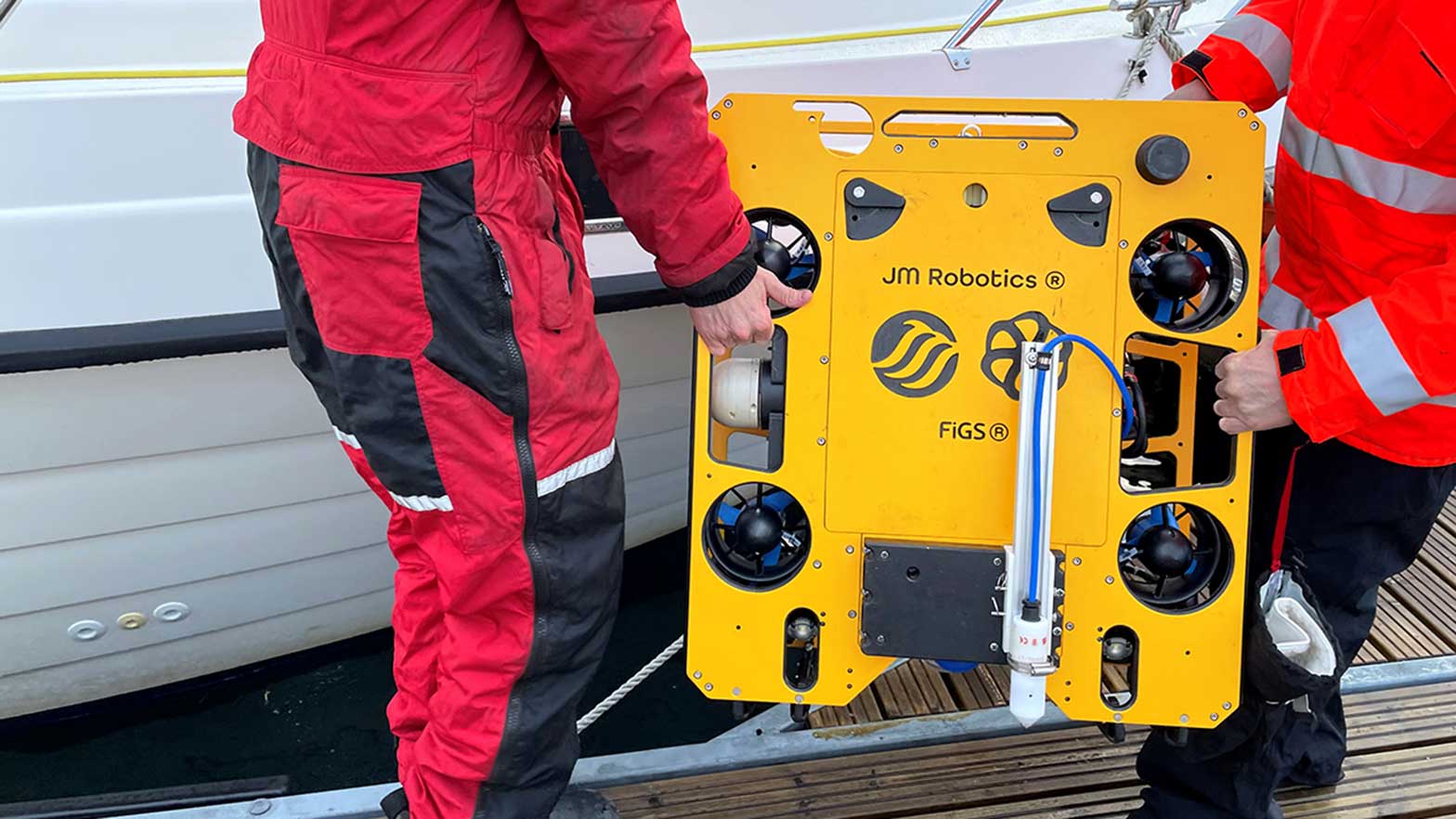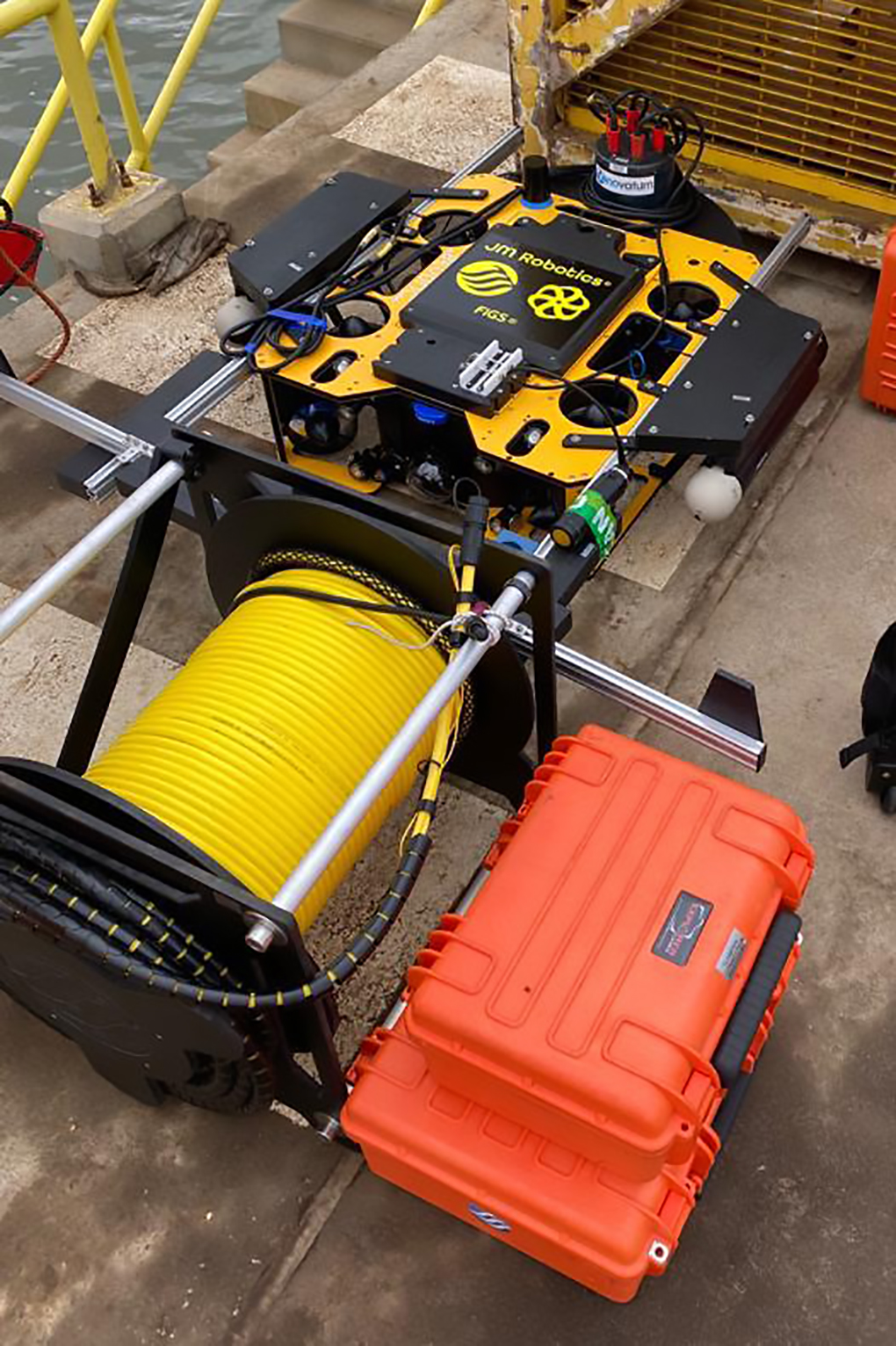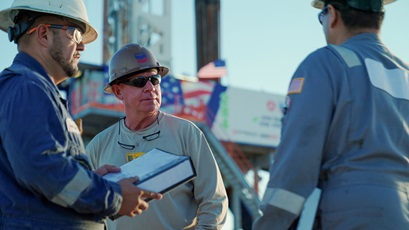our operations
mini ROV makes waves in subsea inspections
2 min read | april 21, 2023
Mini ROVs like this help inspect subsea assets.
Using the right tool can make work safer and more efficient. That’s the case with Chevron’s newest tool for subsea inspections.
In addition to human divers and large-sized remote-operated vehicles (ROVs), we now have another option: mini ROVs. We’ve teamed up with tech company BeyonC to use mini ROVs that combine a vehicle made by JM Robotics with FiGS® sensor technology made by FORCE Technology.
why it matters
Mini ROV-based inspections allow us to get a thorough and accurate assessment of our assets without sending in divers or a work class ROV, noted Gopal Kothari, who helps deploy technology piloted across Chevron. Using mini ROVs can improve health, safety and environment risk and reduce cost, he said.
gopal kothari
technology deployment and adoption manager
what’s new
Chevron has used large ROVs for years. Known as work class ROVs, they can be 20 times larger than the mini ROVs and require a large vessel and a team of up to 10 people for field execution. While they are sometimes the right tool for the job in deep water, they don’t operate well in shallower water. Shallow water inspections were typically carried out by divers.
Mini ROVs, which are smaller than a person, work well in shallow water. A team as small as two people can deploy them from anywhere at any time without a separate vessel. The mini ROVs get power through their tether but can run on batteries for up to six hours.

A team of two can deploy a mini ROV.
cost and performance
Mini ROVs are a cost-effective option, with estimated savings of approximately $130,000 per deployment in SASBU. The cost savings come from minimizing the use of divers, not having a need for a vessel or for additional personnel for vessel-based ROV deployments, as well as from faster inspections.
Mini ROVs can be up to five times faster than their work class counterparts. Because deploying the mini ROVs is so simple, we can launch them as needed. Plus, not having to launch them from a vessel lowers the carbon intensity of using ROVs for inspection.

Mini ROV equipped with dual FiGS sensors for pipeline survey in Southern Africa.
how it works
We use mini ROVs equipped with FiGS sensors to carry out cathodic protection system surveys on our subsea structures. Cathodic protection occurs when anodes installed on metal underwater structures generate an electrical current that protects the metal by redirecting corrosion away from the structure.
Anodes deteriorate over time, so we need periodic surveys to see how they’re holding up. FiGS sensors mounted on mini ROVs go around the structure and sense the current that the anodes emit. We use the mini ROV and FiGS-provided data to assess whether the structures are adequately protected, as well as calculate the remaining life of our structures.
The mini ROVs with FiGS sensors can also sense the cathodic protection on assets buried beneath the seafloor. Along with these cathodic protection surveys, mini ROVs are also enabling detailed visual surveys of our assets at the same time.
topics covered
related content
-

 how APOLO helps chevron pinpoint prime drilling locations
how APOLO helps chevron pinpoint prime drilling locationsour operationsnovember 12, 2025
-

 robotics supports more efficient workplace
robotics supports more efficient workplaceour operationsnovember 10, 2025
-

 the people who power the US energy advantage
the people who power the US energy advantageour operationsnovember 06, 2025
-

 a statement from chevron CEO mike wirth on Argentina
a statement from chevron CEO mike wirth on Argentinaour operationsseptember 24, 2025
chevron email updates
Subscribe to our newsletter to receive news and updates.



